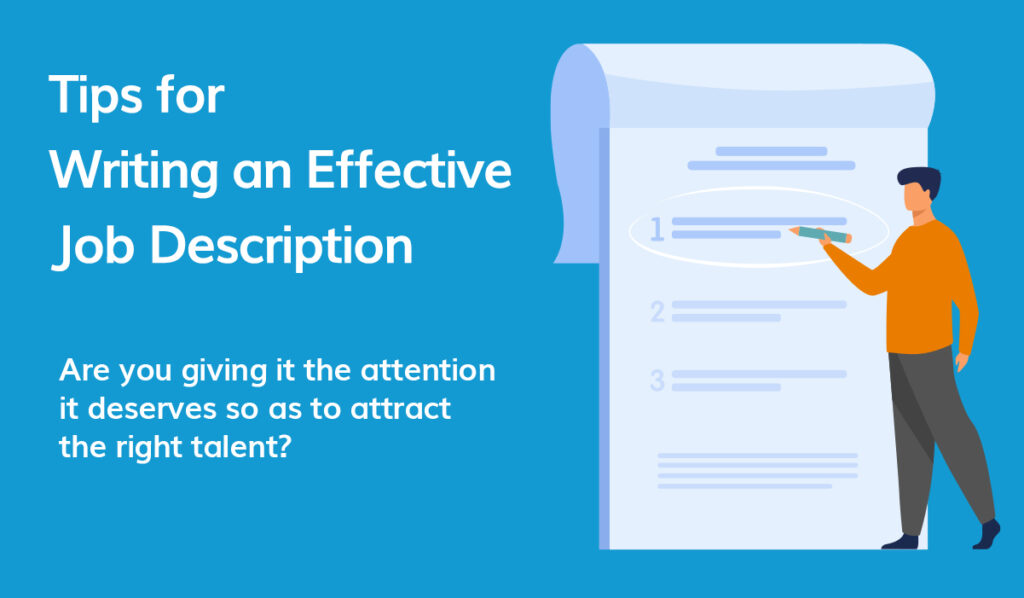The job description is quite literally an advert for your company to attract the right talent. It can, in fact it should, give insight to your company culture as well as the role requirements, yet too often it is not given the attention or importance it deserves. At worst, it’s just a paragraph detailing what the role requires, and off it goes. It’s no surprise then that this won’t attract the best candidates from the job-seeking pool. We are all in agreement about the importance of a CV, so why don’t we apply the same logic to a job description? After all, it is the counterpart to the CV and just as hiring managers discard an unattractive CV in seconds, jobseekers do the same to job descriptions. So, for your job advert to stand out, it must be clear, well-formatted and targeted towards the candidates you are looking for.
 It doesn’t add up
It doesn’t add up
Often, when speaking to employers, the conversation will invariably touch on how difficult it is to find ‘good candidates’. On the other hand, our recent KMP poll showed that jobseekers think that finding the right job to apply for is the toughest part of the job search! Yet the jobs are there, and so are the ‘good candidates’. So, what’s not adding up? Could it be something as simple as the job description not standing out like it should and causing many potentially good fits to fall through the net? Whilst possibly many other factors come into play, ensuring that the job advert is the best it can be is definitely a good start.
Take a look at some basic tips that can help optimise your job description:
Don’t go on…and on
Getting the length right is a fine balance. Too short and the job looks unimportant, unexciting and unattractive. Too long and you’ve lost the jobseeker to a snooze. Of course you do need to take into consideration the type of job you are advertising and some may naturally require more information. However, the bottom line is: focus on what’s strictly important, keep it as succinct and simple as you can, and eliminate any unnecessary waffle. Also, keep in mind that many jobseekers are checking the job boards on their phones. Don’t make them have to scroll, and scroll…and scroll before they get to the information they want.
Easy to scan
Nobody likes to read through a chunk of text which is poorly punctuated and seems never-ending. It’s even harder when reading off a phone. Wherever possible, bullet the information and separate the sections with clear headings. Like this, the jobseeker can skim it and find what they are looking for easily. Remember that job seeking is tedious, laborious and time-consuming. Jobseekers will have gone through tens of adverts and a post that is not clear can be overwhelming and discarded within seconds.
Pick your words
Write for the audience you are targeting and at the same time use the language that reflects your company culture. If the job advert sounds overly formal and pedantic, subconsciously that will be the office image that is conjured up in the jobseeker’s mind. And vice versa. Do include jargon that is related to the industry but there is no need to write overly convoluted sentences, no matter what the job is. Simple and clear language is always best. This applies to the job title too. Avoid anything cryptic just because it might seem cooler, because you’ll likely end up with the wrong type of applicants.
Also, use a positive tone as this will convey a welcoming company culture rather than unapproachable or cold. By way of example, say ‘The successful candidate must have XXX years of experience’ rather than ‘Applicants without XXX years of experience will not be considered’.
Finally, make it sound exciting and try to transmit your passion through your writing. This will in turn attract passionate candidates. Boring begets boring.
Importance of Order
Organise the order of your job advert to ensure that the jobseeker sees what’s most important to him / her first. Jobseekers will usually immediately scan for requirements to see if their qualifications, skills and experience match up. Don’t be tempted to start off with a long company description – that’s not the applicant’s priority. Generally, start off with a brief introduction to the role which is a maximum of two sentences. This can be followed by Duties and Responsibilities, Requirements, Benefits and then finally Company Information. Do not be tempted to put the company information first. The jobseeker can see the name of the company near the job title and will only be interested in more details if they think they are a good match for the role.
Sell it
You are marketing the position in order to get the best results, so put your best foot forward and be sure to include the advantages that your company has. If your office has an enviable postcode, mention it. Mention the benefits that come with the role. Candidates are very aware of what perks some companies offer, so if you have them, flaunt them. A salary benchmark will also help to attract the right applicants. Many companies choose to omit this, perhaps for fear of narrowing down the amount of applicants, but at the end of the day it’s quality over quantity.
Finally, ask for what you need to get what you need. Don’t ask for too much unless it is truly necessary. If you put in too many requirements for a job that really does not need any qualifications, you will clearly not get the candidates you are looking for.
Get it out there!
Be sure to advertise your vacancies via the right channels. Follow this link for details to submit your advert on Keepmeposted.

